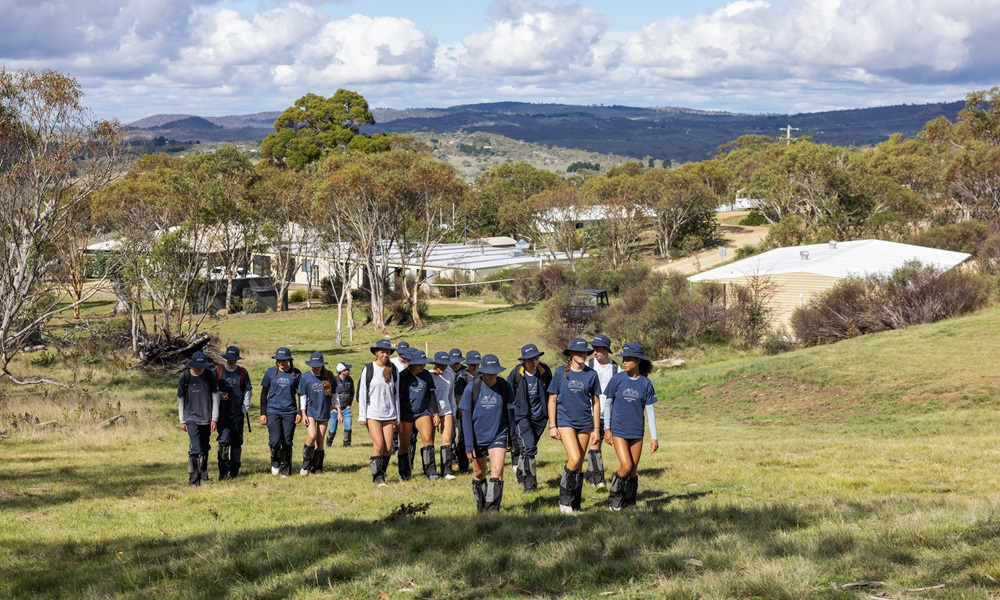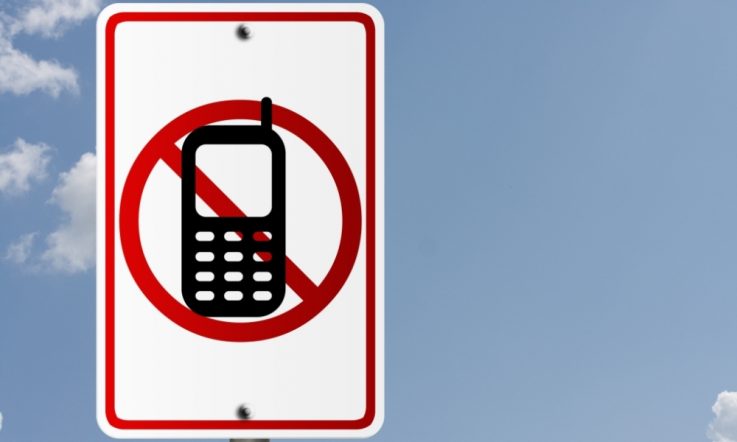At Redlands School in Sydney’s North Shore, a new 9-week, device-free residential learning program for all year 9 students is providing opportunities for integrated learning, relationship building and community mindedness. In today’s reader submission, Head of Secondary School Gemma Van de Peer draws on student surveys, reflections and program evaluation data from the inaugural 2025 cohort, to tell readers about why and how the program was developed, and the impact it has had on student learning and wellbeing.
How do you take young people off their devices and out of the city, place them in nature, in community, and in a learning program that challenges them to grow? For Redlands, the answer was Moonbah.
This term-long, residential program is held at the school’s High Country campus outside Jindabyne in New South Wales and invites every year 9 student to step into an immersive, interdisciplinary experience. More than a change of location, it is a change in mindset, pace and purpose. Grounded in values, collaboration and growth, Moonbah was co-designed to empower students to reconnect with themselves, with each other, and with learning, so they could ‘let their light shine’.
Residential experiential learning
The rationale behind Moonbah is clear. As part of an internal multi-year review of adolescent learning and engagement, Redlands staff identified that year 9 can become a ‘drift year’ for students, marked by dips in motivation, unsettled peer dynamics and a search for deeper self-understanding. Drawing on student data, parent insights, and school surveys, we reframed this year as a pivotal opportunity.
Moonbah is a direct response to this. It builds on the school’s decades-long Winter School program and incorporates learning from national best-practice models at other residential experiential learning programs in Victoria and South Australia. Grounded in research into residential experiential learning, Moonbah is designed to promote student agency, wellbeing, self-regulation, and future readiness.
Designing with purpose – a nested community approach
The Moonbah Program was co-designed using a nested community model that reflected Redlands’ commitment to collaborative leadership, broad consultation, and innovation in program development. This model consisted of 3 interconnected communities:
- The Community of Practice provided strategic and pastoral oversight of the program and included school leaders from across key areas, including the principal
- The Community of Design comprised a core team of 6 teaching staff who led the development of the multidisciplinary learning program, working in close consultation with the Community of Practice
- The Community of Engagement included staff, students and parents, and provided feedback and insight to ensure that the program was relevant, responsive, and grounded in the lived experience of the school community
This nested structure ensured that the Moonbah Program was not only strategically aligned with the school’s broader educational vision, but also co-created in ways that invited ownership, input and shared purpose across the broader community.
What happens at Moonbah?
At its core, the Moonbah Program is a 9-week, device-free residential experience centred on community, connection, and integrated learning. All year 9 students participate in 4 interdisciplinary core units and select from a rich offering of electives. These range from STEM and environmental science to Indigenous cultural studies, the arts, and outdoor education.
Electives such as Moonbah Echoes, Walk the Line, and The Sounds of Moonbah are delivered in-situ and draw on the land, the community, and the students’ own reflections. Students engage in activities like storytelling, ecological monitoring, creative arts and community service, all while navigating daily life in dormitories and contributing to campus routines.
Smart device-free by design
One of the most defining features of Moonbah is that it is a smart device-free experience. At Moonbah students reconnect with themselves, with peers, and with the natural world. This digital disconnection is not framed as a deprivation, but as a gift.
Surveys from the inaugural cohort found that not only did students not miss their devices, but many also expressed a preference for even less technology during the program. They noted improved social confidence, increased face-to-face communication, and an enhanced ability to read non-verbal cues. One student shared, ‘I could essentially talk to anyone without judgement’.
To sustain these gains, Redlands has partnered with psychologist and founder of Digital Nutrition Jocelyn Brewer to support students and parents in maintaining mindful tech use post-program. Her model, focusing on balance, intentionality and digital wellbeing, has become a practical bridge between the Moonbah bubble and life back at home (Brewer, 2025).
Wellbeing, community and belonging
The pastoral and emotional safety of students is at the heart of the Moonbah model. With a 24/7 residential context, Redlands ensures staff are trained and present across academic, social and wellbeing roles. Weekly ‘Connection Check-Ins’ with families balance autonomy with support, offering both shared group calls and private conversations.
Students are guided in setting boundaries, building emotional vocabulary, and using reflective practices like journalling. Guided by the Redlands counselling team, staff use frameworks such as Teen Mental Health First Aid and associated student help-seeking frameworks to respond to challenges with empathy and consistency.
Student survey feedback and looking ahead
The result? Stronger student voice, more durable relationships, and a deeper sense of belonging. Survey results from the first cohort affirm the transformative power of the program. Of the 150 students surveyed, 98% reported growth in independence, 91% said they built new or deeper friendships and 87% felt more confident managing social dynamics. Most students (94%) said they felt proud of their personal growth. They also identified increased environmental awareness, a shift in learning motivation, and stronger self-regulation skills.
As one student put it ‘we wanted to learn because we enjoyed what we were doing. We were invested in the outcomes’.
Moonbah represents not just a change in program, but a change in philosophy: a shift from assessment-driven performance to growth-oriented learning, which sits at the heart of the broader Redlands learning platform.
It’s now a signature program that’s an expected part of every Redlands year 9 experience and a compelling model for middle years transformation.
Moonbah’s ongoing success is underpinned by a strong culture of feedback, iteration and community partnership. Student and parent surveys, staff debriefs and parent focus groups shape each new cohort’s experience. We’re also evolving our P-12 Wellbeing Framework for residential settings and have partnered with Professor Nick Hopwood from the University of Technology Sydney on a Change Laboratory study to rigorously assess Moonbah’s enduring impact.
For other schools considering a similar pivot, our message is simple: trust students with space, time and challenge and they will flourish.
References
Brewer, J. (2025). Maintaining the Moonbah momentum: Mindful media habits [Handout]. Digital Nutrition. https://www.digitalnutrition.com.au/
In Redlands’ Moonbah program, students are guided in setting boundaries, building emotional vocabulary, and using reflective practices like journalling. Think about how you engage with your students. Do you approach them with empathy and consistency? What does this look like in your classroom?
How do you work to engage year 9 students in their learning and sense of wellbeing and belonging at school? Do you have any programs in place to help you with this? What supports do you need to do this effectively?



